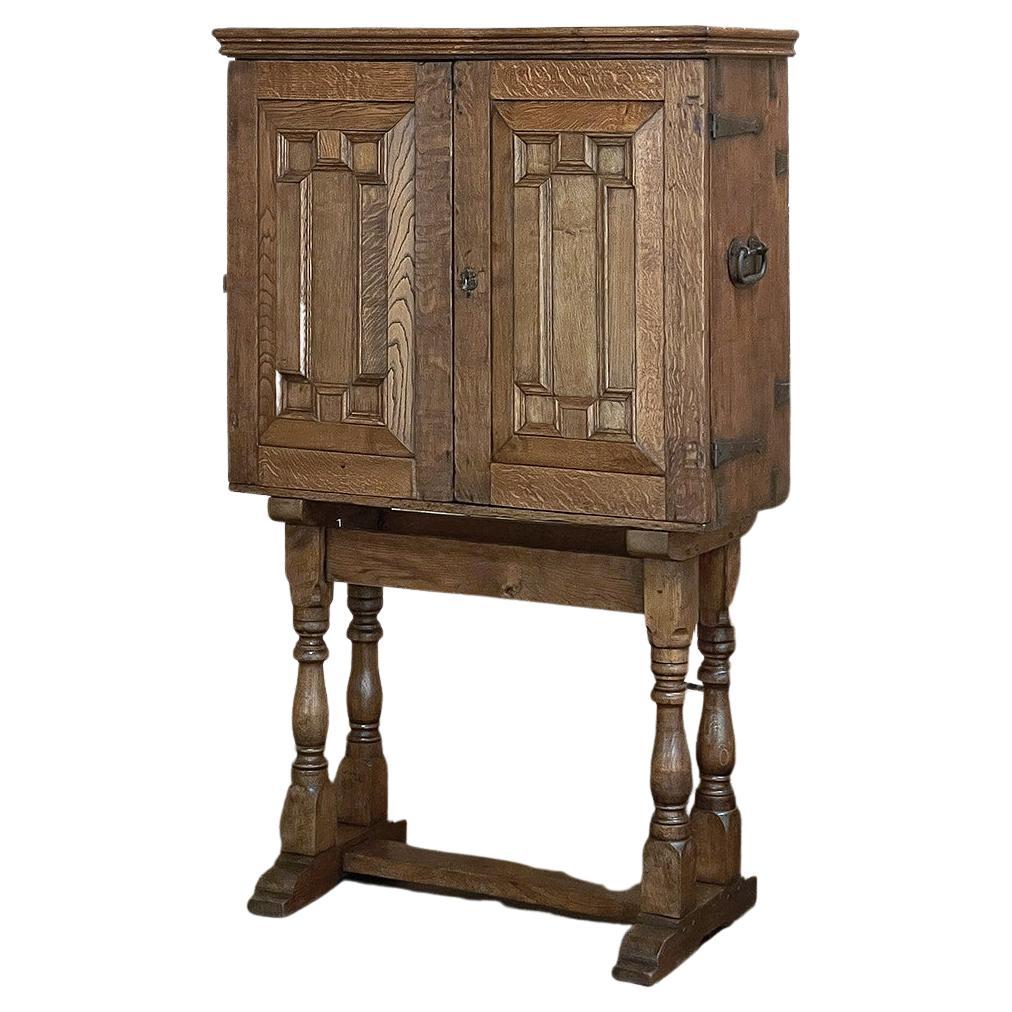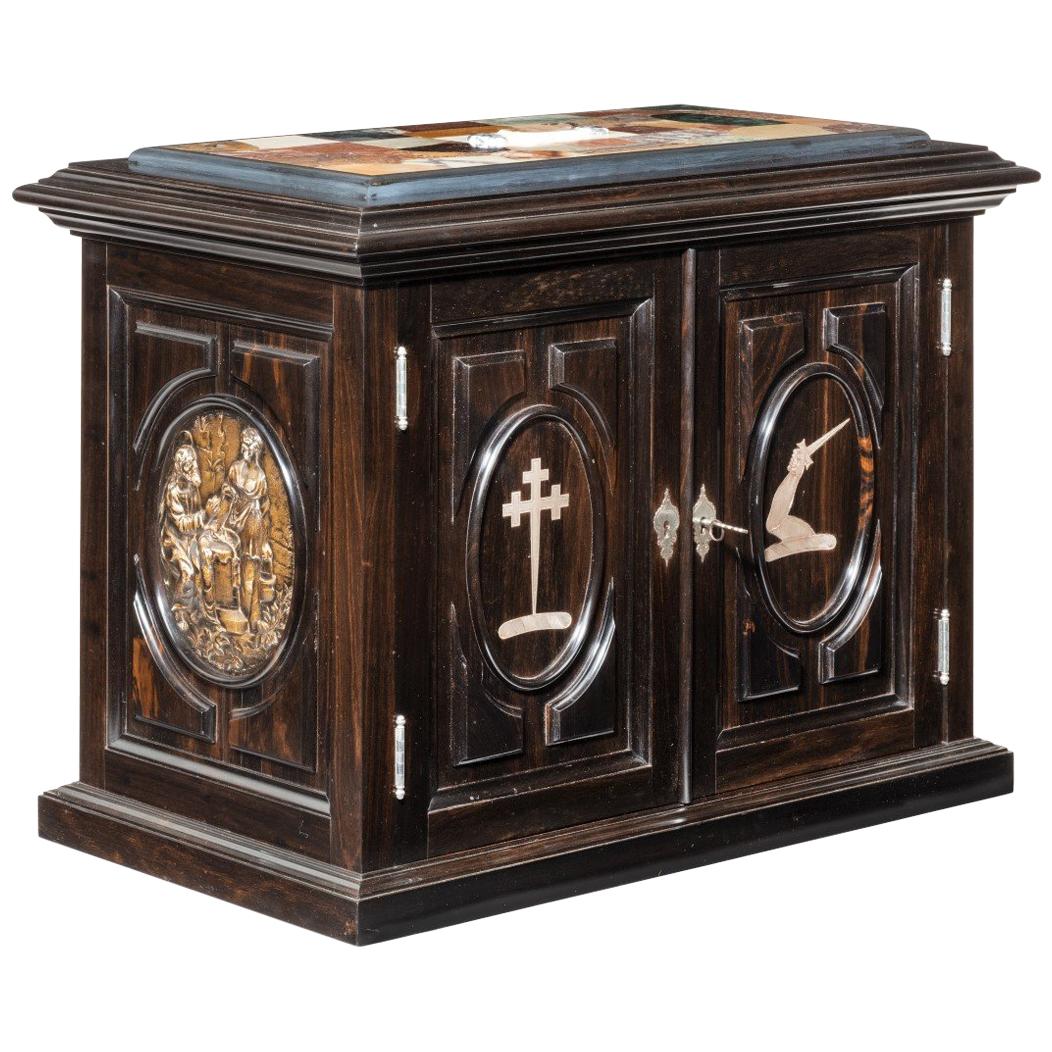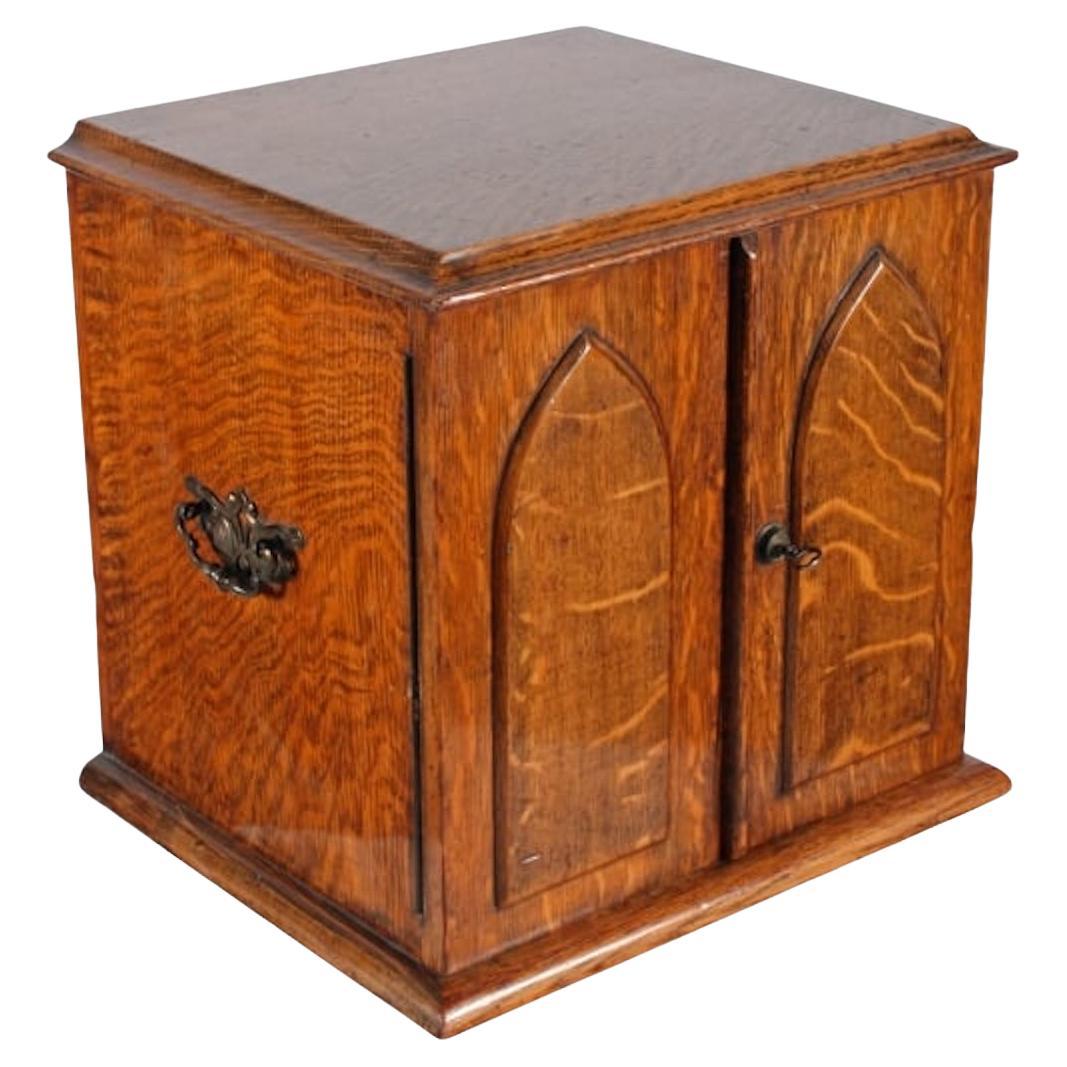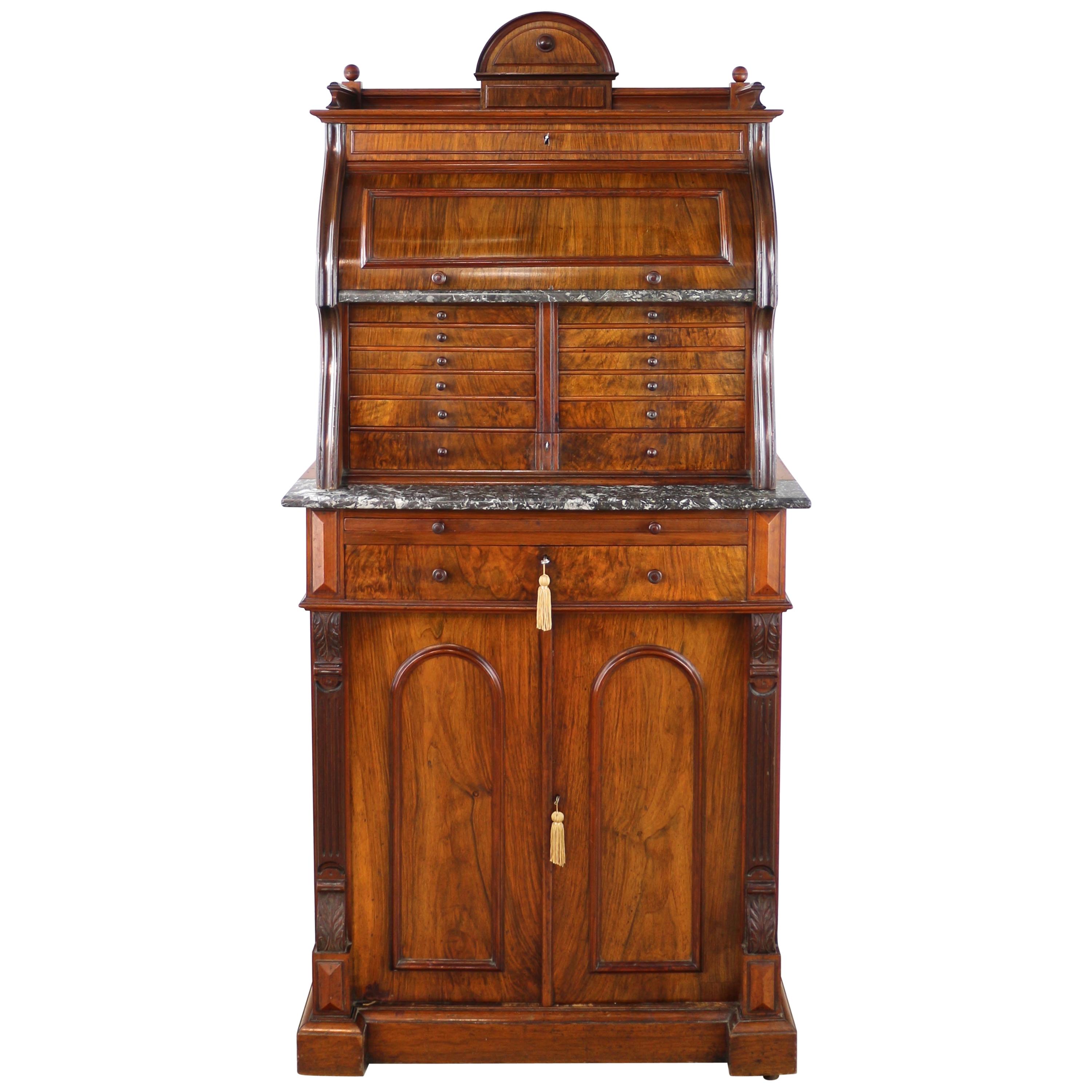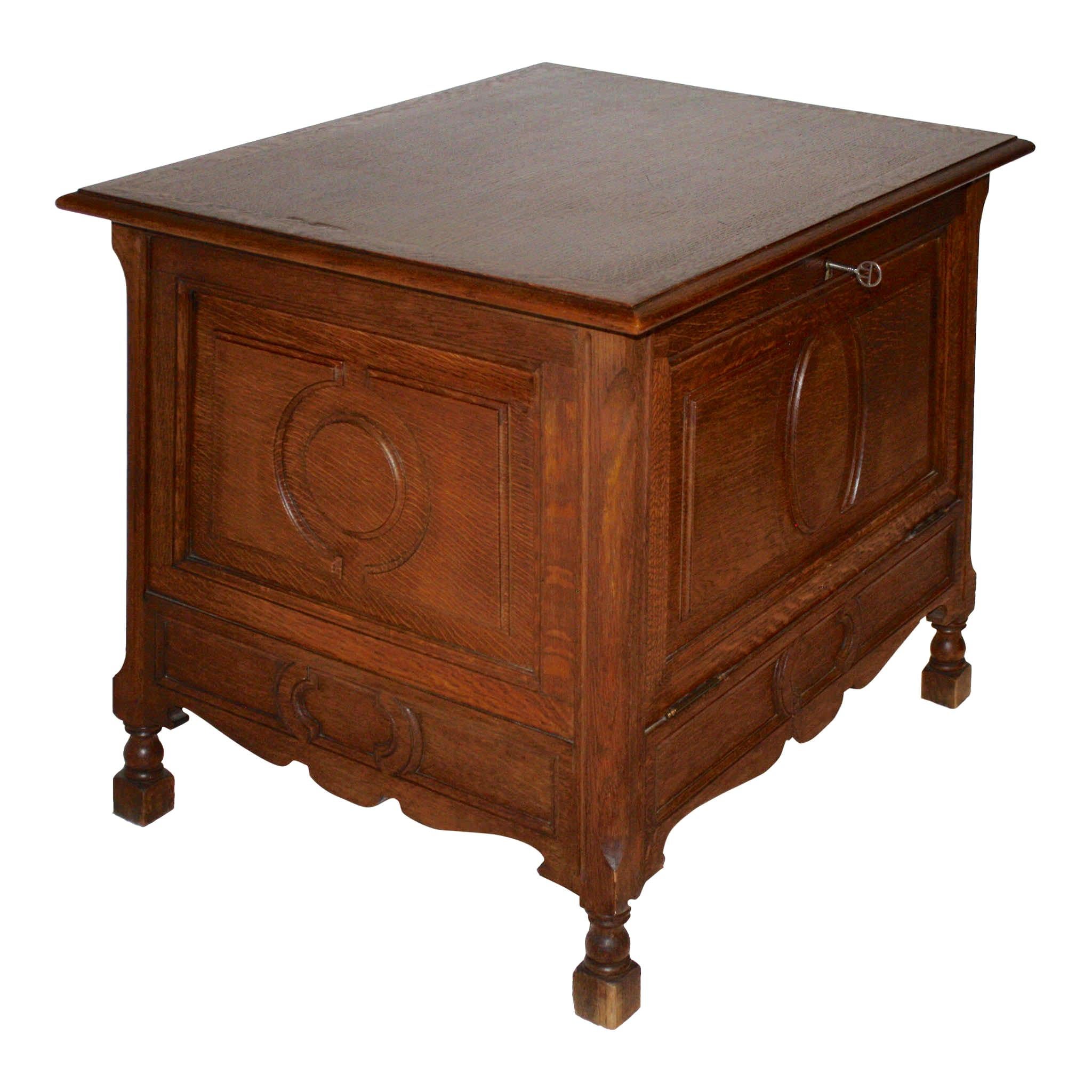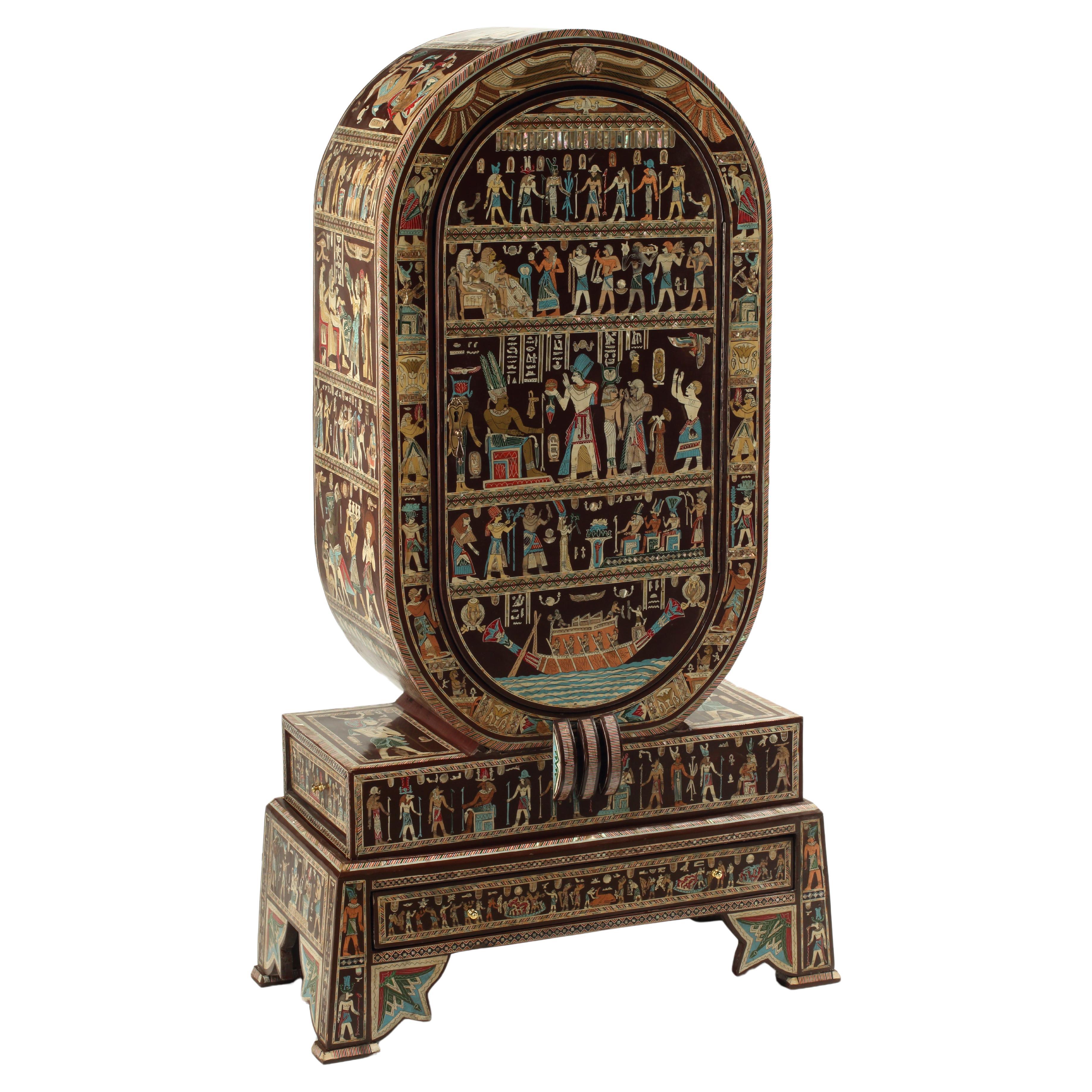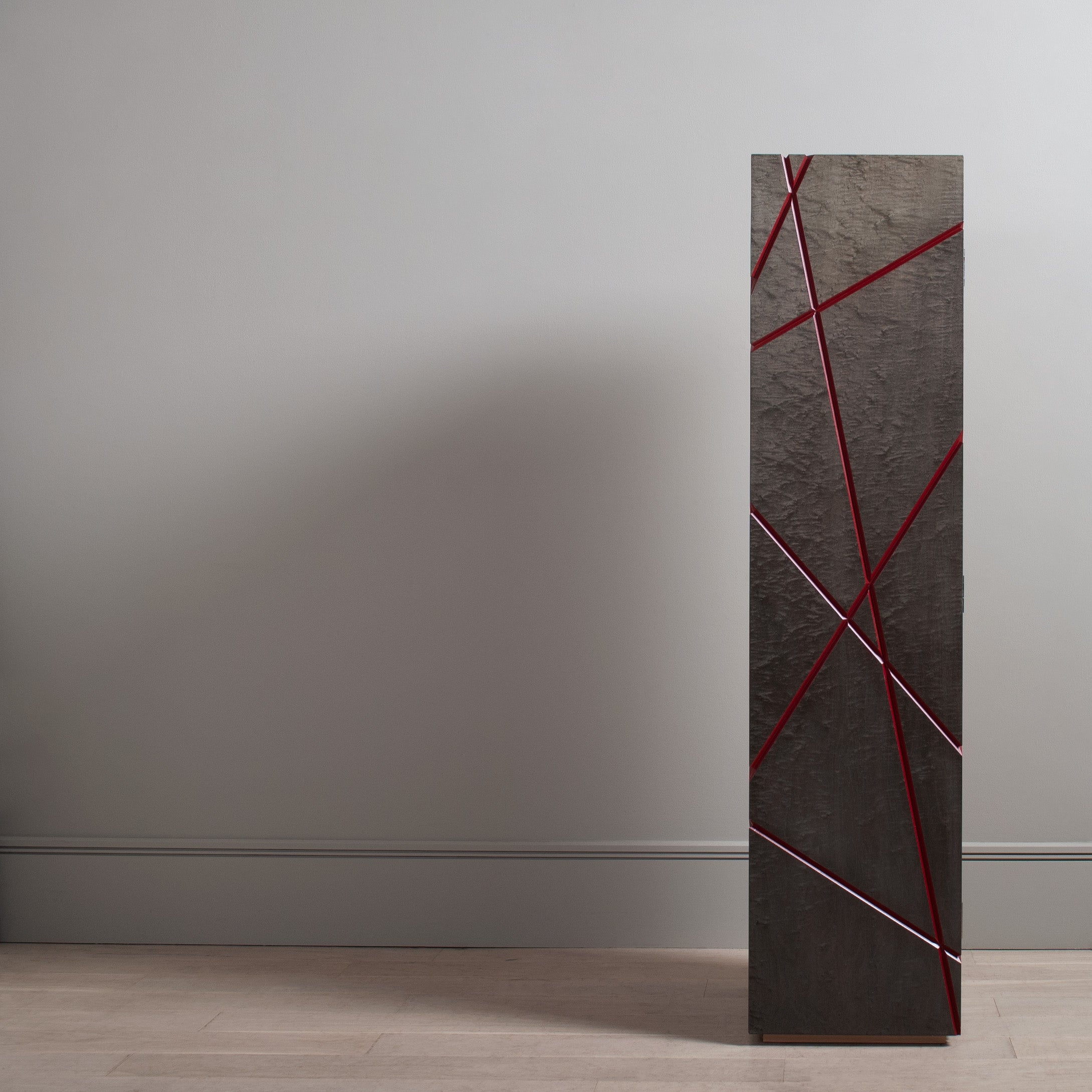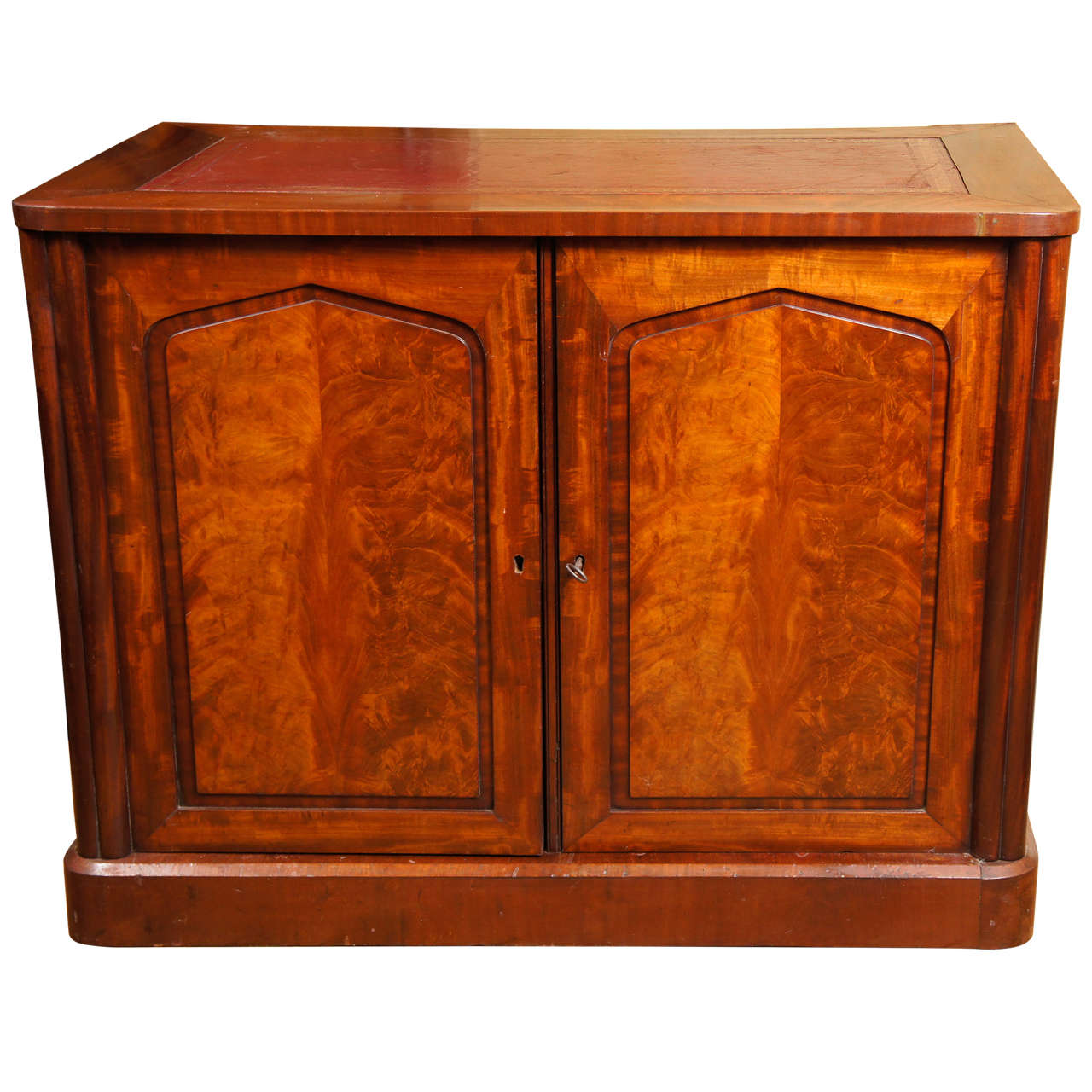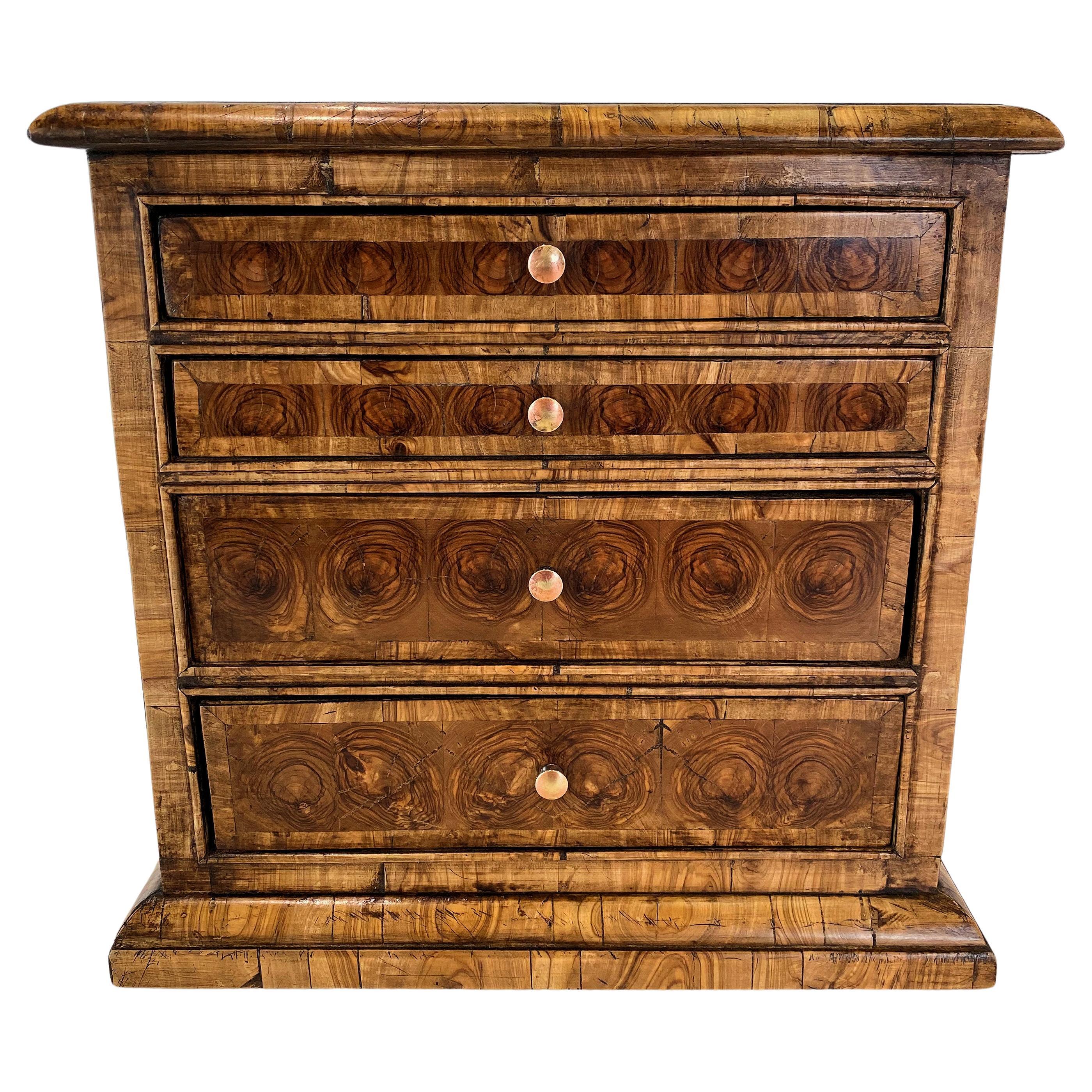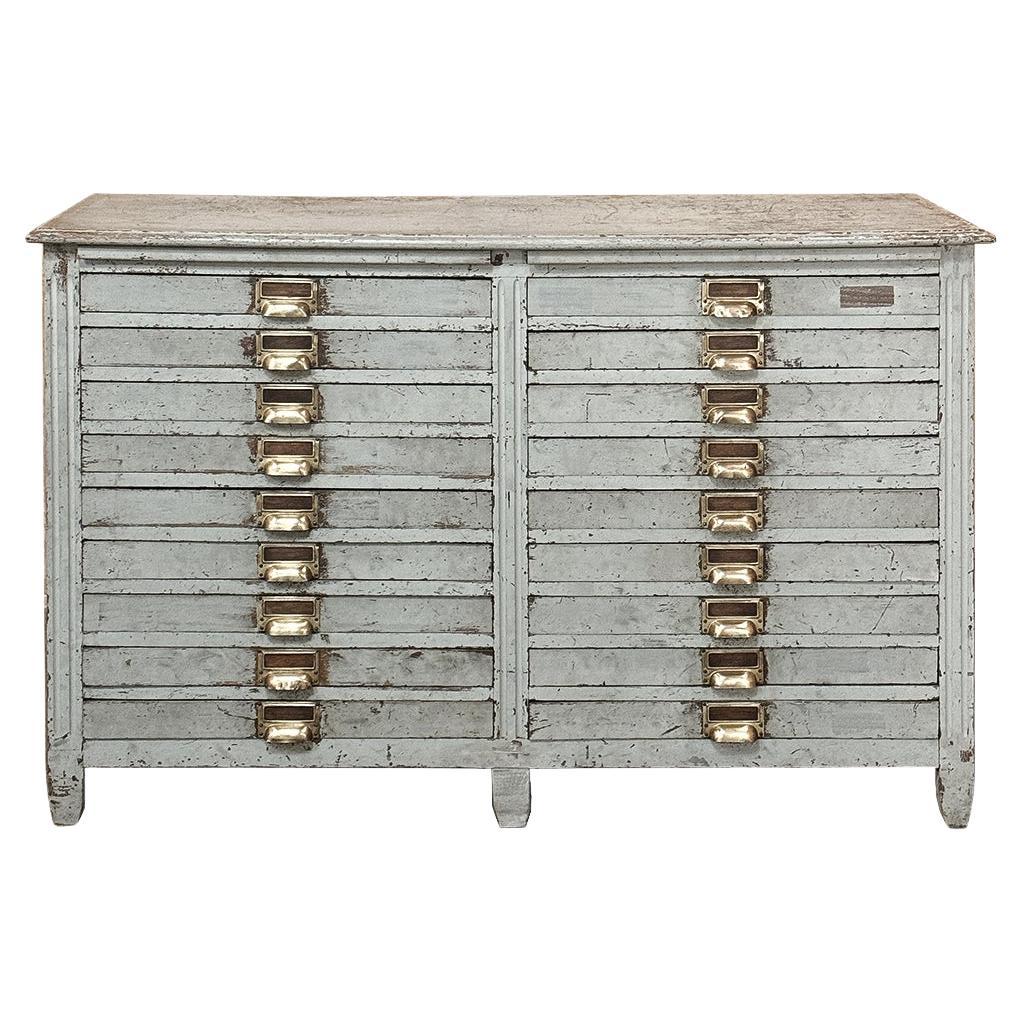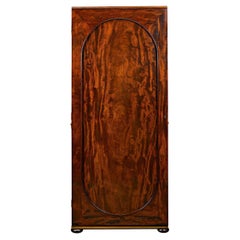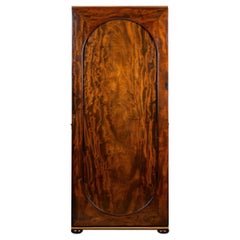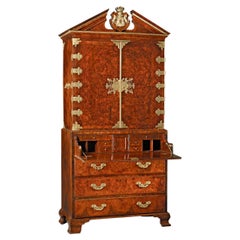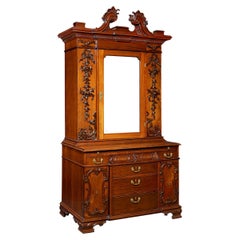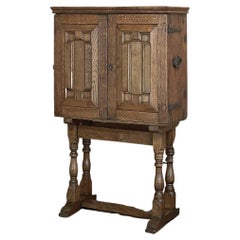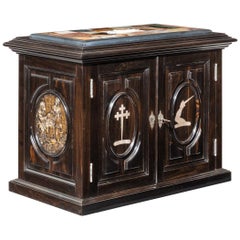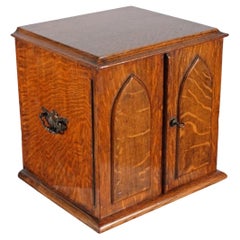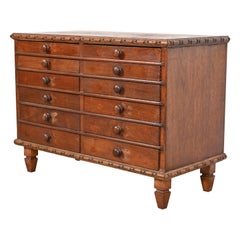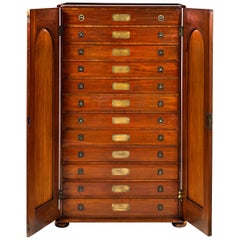
Victorian Brass Hardware Collector's Cabinet
View Similar Items
Want more images or videos?
Request additional images or videos from the seller
1 of 6
Victorian Brass Hardware Collector's Cabinet
$38,500List Price
About the Item
- Dimensions:Height: 45.25 in (114.94 cm)Width: 26.5 in (67.31 cm)Depth: 18 in (45.72 cm)
- Style:Victorian (Of the Period)
- Materials and Techniques:
- Place of Origin:
- Period:
- Date of Manufacture:circa 1880
- Condition:
- Seller Location:New Orleans, LA
- Reference Number:Seller: 30-42021stDibs: LU891119533302
About the Seller
5.0
Recognized Seller
These prestigious sellers are industry leaders and represent the highest echelon for item quality and design.
Established in 1912
1stDibs seller since 2010
111 sales on 1stDibs
Typical response time: 9 hours
Authenticity Guarantee
In the unlikely event there’s an issue with an item’s authenticity, contact us within 1 year for a full refund. DetailsMoney-Back Guarantee
If your item is not as described, is damaged in transit, or does not arrive, contact us within 7 days for a full refund. Details24-Hour Cancellation
You have a 24-hour grace period in which to reconsider your purchase, with no questions asked.Vetted Professional Sellers
Our world-class sellers must adhere to strict standards for service and quality, maintaining the integrity of our listings.Price-Match Guarantee
If you find that a seller listed the same item for a lower price elsewhere, we’ll match it.Trusted Global Delivery
Our best-in-class carrier network provides specialized shipping options worldwide, including custom delivery.More From This Seller
View AllEnglish Upright Cane Cabinet
Located in New Orleans, LA
This English cane cabinet exhibits classical style and impeccable design. Crafted of lustrous Cuban mahogany, this upright case features a beautifully paneled door which opens to rev...
Category
Antique 19th Century English Cabinets
Materials
Brass
$28,500
Mahogany Upright Cane Cabinet
Located in New Orleans, LA
Classical style and impeccable design distinguish this English upright cane cabinet. Crafted of lustrous Cuban mahogany, this case is comprised of a beautifully paneled door which op...
Category
Antique 19th Century English Cabinets
Materials
Brass
King George I Ambassadorial Secrétaire-Cabinet
Located in New Orleans, LA
This highly important secrétaire-cabinet was crafted for and specially ordered by King George I for the British Ambassador to Russia. From its craftsmanship and materials to its exceptional artistry, it is a work of royal and historic significance that exudes power in each and every detail. The broken pediment at its apex features the simplified royal coat of arms bearing the king’s crown, while the interior is adorned by portraits of the British Royal Family. Placed within the ambassador’s St. Petersburg home, this entirely unique piece of furniture would have been a potent reminder of England's grandeur and political importance.
Relations between England and Russia during this period were at an all-time high. Peter the Great had traveled to England in 1698 as part of his widely known “Grand Embassy” tour, wherein he attempted to gain foreign support against the Ottoman Empire. He spent a period of nearly four months there, meeting with King William III and his court on numerous occasions. Noted academic Arthur MacGregor wrote concerning the impact of the trip, “For two decades following Peter's visit, British influence in Russia reached a peak. It manifested itself in social custom, in craft practice and in ships and naval organization... it reached a significant sector of the population before relations cooled once again and the two nations pulled back from this era of unprecedented cordiality.”
First and foremost, however, it is a reminder of British might and influence. By the reign of King George I, England had come into its own as a world power. Unique in its design, this cabinet is a reflection of the country’s might. It is crafted from the highest-quality solid walnut and burr walnut adorned by gilded lock plates and engraved hinges. The presence of ormolu at its apex and lining the doors was a rarity for this period, and its addition makes manifest the importance of the design.
The outer doors open to reveal multiple interiors, including fifteen separate drawers around a central cupboard; the cupboard doors each bear mezzotint portraits of George I and his father, Ernest Augustus, Elector of Hanover. An etching after the portrait of George I dating to circa 1716 is in London’s Royal Academy. A second, inner pair of doors are adorned by mezzotints of the Prince and Princess of Wales (later Queen Caroline and George II), which are both after portraits by Sir Godfrey Kneller dated 1716 in the Royal Collection. A final portrait is revealed on the very interior of the cabinet, where a mezzotint of Frederick, Anne, Amelia and Caroline, children of the Prince of Wales, resides. An etching (circa 1715-1720) after this portrait can be found in the National Portrait Gallery (London).
Apart from its abundance of royal portraiture, the cabinet features stunning painted decoration, including floral designs as well as clouds, birds and trees in a bucolic motif reminiscent of Eden. Its lower portion is a study in both form and function, featuring a fitted secrétaire-drawer above three additional drawers for storage. The cabinet appears in The Shorter Dictionary of English Furniture by R. Edwards from 1964, a text that is regarded as the bible of British furniture design. Edwards describes it as a “writing cabinet...given by George I to the British Ambassador at the Russian court.”
The cabinet was likely made for the 18th-century German diplomat and writer Friedrich Christian Weber, who represented English interests at the Russian court from 1714 until 1719. Although Weber’s tenure as ambassador was relatively short, while in St. Petersburg, he authored his account entitled Das veraenderte Russland (The Present State of Russia), which was published in three volumes in 1721, 1739 and 1740. It may, however, also have been made for George Douglas, 2nd Earl of Dumbarton, who served as ambassador alongside Weber in 1716. Diplomatic relations ceased between the two countries in 1721.
In 1928, the cabinet appeared for sale at the International Exhibition of Antiques & Works of Art in Olympia. It had previously been in the collection of the Woltner family of Bordeaux, the celebrated vintners who owned the estate Château Laville Haut-Brion and produced wine of the same name. According to the family, Monsieur Woltner was given the cabinet as a gift from an aunt who lived in Russia for many years. After leaving the Woltner collection, the cabinet was acquired by William Berry...
Category
Antique 18th Century English Georgian Secretaires
Materials
Brass
Mahogany Bureau Cabinet After Thomas Chippendale
By Thomas Chippendale
Located in New Orleans, LA
This extraordinary Irish bureau cabinet was crafted based on a design for a desk and bookcase drawn from Thomas Chippendale’s famed 1762 edition of The Gentleman and Cabinet-Maker's ...
Category
Antique 18th Century Irish Chippendale Cabinets
Materials
Mirror, Mahogany
19th Century Watch Winding Display Cabinet
Located in New Orleans, LA
This incredible, one-of-a-kind watch display cabinet brings together the beauty of an antique with the functionality of modern technology. Crafted of mahogany, this 19th century jewelry display cabinet...
Category
Antique 19th Century Unknown Empire Cabinets
Materials
Mahogany
19th Century Coromandel Inlaid Vitrine
Located in New Orleans, LA
Highly-prized coromandel, or East Indian ebony, was used to create this beautiful Victorian vitrine. Featuring delicate inlay in the Victorian/Edwardian style and glass panels framed in the equally luxurious satinwood, this cabinet is constructed to fit flush against a wall with baseboards. Elegant cabinets such as this are perfect for displaying one's treasures, but with original locks, keys, mirrors and fleur-de-lis fabric, this case is a prized possession unto itself,
circa 1890.
Measures: 30" wide x 14 ½" deep x 41 ½" high.
Coromandel ebony is variegated brown and black, often called "streaky," wood. It is considered a highly valuable wood for turnery, fine cabinet...
Category
Antique 19th Century English Victorian Vitrines
Materials
Glass, Mirror, Ebony, Satinwood
You May Also Like
18th Century Dutch Collector's Cabinet
Located in Dallas, TX
18th Century Dutch Collector's Cabinet was designed for the express purpose of keeping a wide variety of numerous collectibles in one case, and features, behind the main cabinet door...
Category
Antique Late 18th Century Dutch Dutch Colonial Cabinets
Materials
Wrought Iron
Superb Early Victorian Ebony Collector’s Cabinet
Located in Lymington, Hampshire
A superb early Victorian ebony collector’s cabinet, of rectangular form with two cupboard doors opening to reveal four short and two long drawers lined...
Category
Antique 1850s Scottish Early Victorian Cabinets
Materials
Ebony
Victorian Oak Collector's Cabinet, 19th Century
Located in Southall, GB
Victorian oak collector's cabinet.
A late 19th century Victorian oak two door collector's cabinet.
The cabinet doors are decorated with a pair of raised Gothic arch panels and ...
Category
Antique 19th Century English Cabinets
Materials
Oak
$1,972 Sale Price
20% Off
Antique Victorian Carved Mahogany Twelve-Drawer Collector's Cabinet, Circa 1880s
By R.J. Horner & Co.
Located in South Bend, IN
An exceptional Victorian carved mahogany twelve-drawer collector's cabinet
USA, Circa 1880s
Measures: 25.38"W x 12"D x 18.38"H. Drawer interiors: 10.38"W x 10.38"D x 1"H.
Good ori...
Category
Antique Late 19th Century American Victorian Cabinets
Materials
Mahogany
Regency Mahogany Collector's Display Cabinet
Located in Bradenton, FL
An English Regency mahogany collector's display cabinet is an elegant and refined piece of furniture typical of the Regency period (early 19th century, roughly 1811–1820). The style ...
Category
Antique Early 19th Century English Regency Cabinets
Materials
Mahogany
$4,950 Sale Price
25% Off
Antique English 19th Century Victorian Burr Walnut Dentist's Collector's Cabinet
Located in Glasgow, GB
A super Victorian figured walnut dentist’s cabinet attributed to ‘The Dental Manufacturing Co. Ltd’ . The top with an arched back and three quarter moulded gallery with turned finial...
Category
Antique Late 19th Century English Victorian Cabinets
Materials
Marble, Metal
Recently Viewed
View AllMore Ways To Browse
Victorian Collectors Cabinet
Small Display Case
Metal Kitchen Cabinets
Glass Front Storage Cabinet
Shelves With Drawer
Artist Cabinet
Glass Door France
Collection Display Cases
Curved Doors
Lacquer Italian Cabinet
Brass Display Cabinets
Antique Door Handle
Antique Kitchen Shelves
Wood Door Patina
Tall Door
Painted Cabinets
Used Steel Cabinets
Cabinets with Glass Doors
